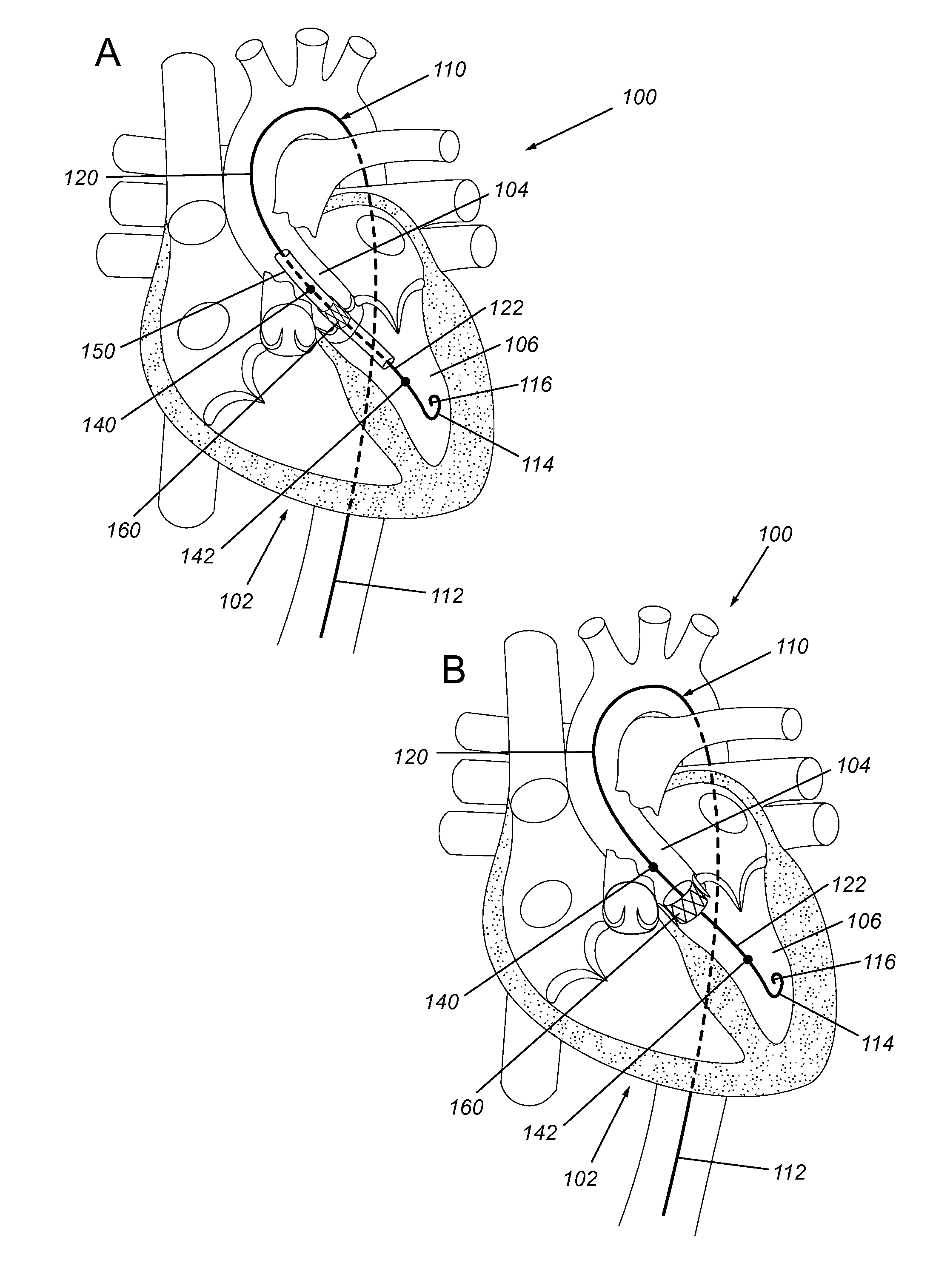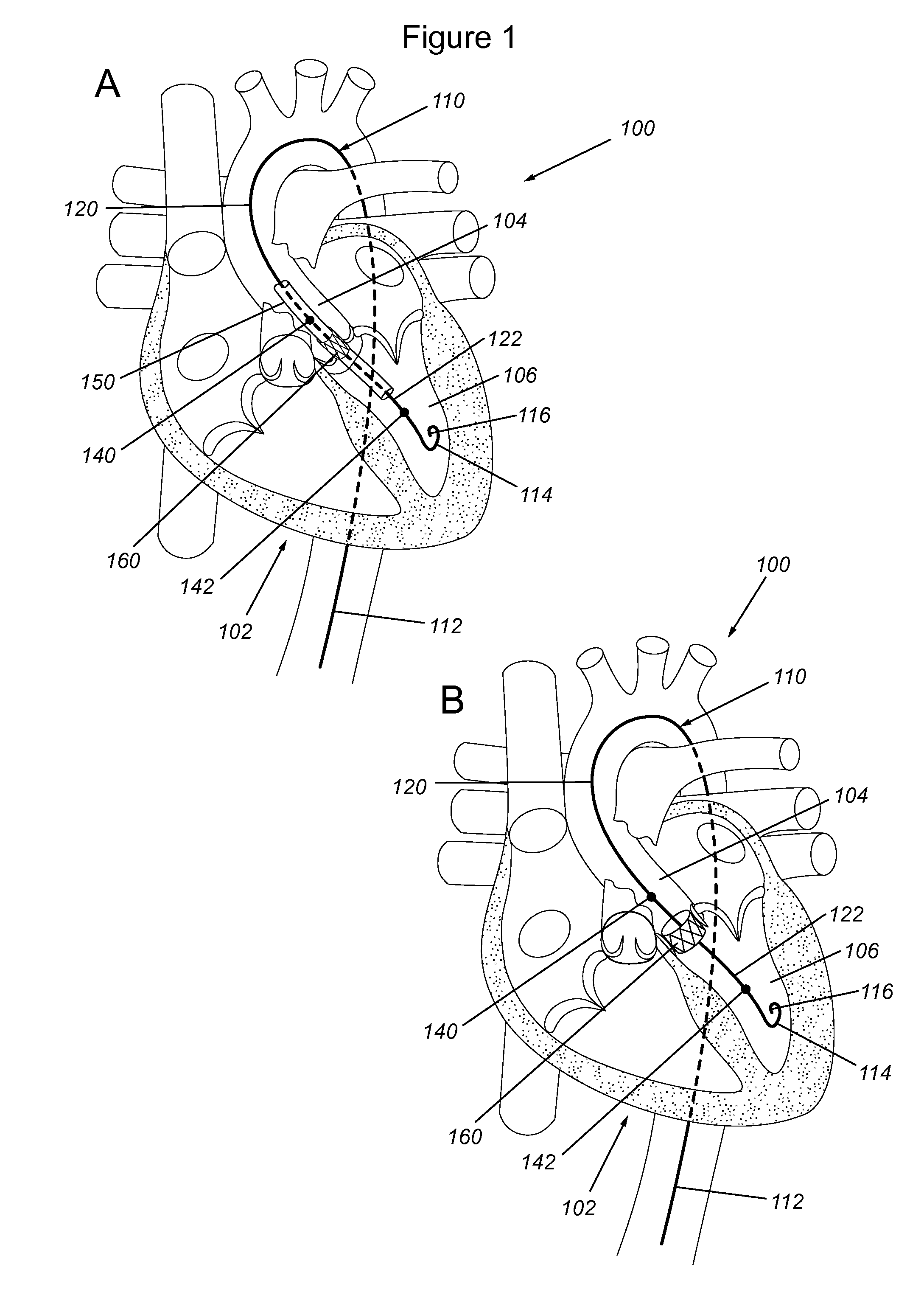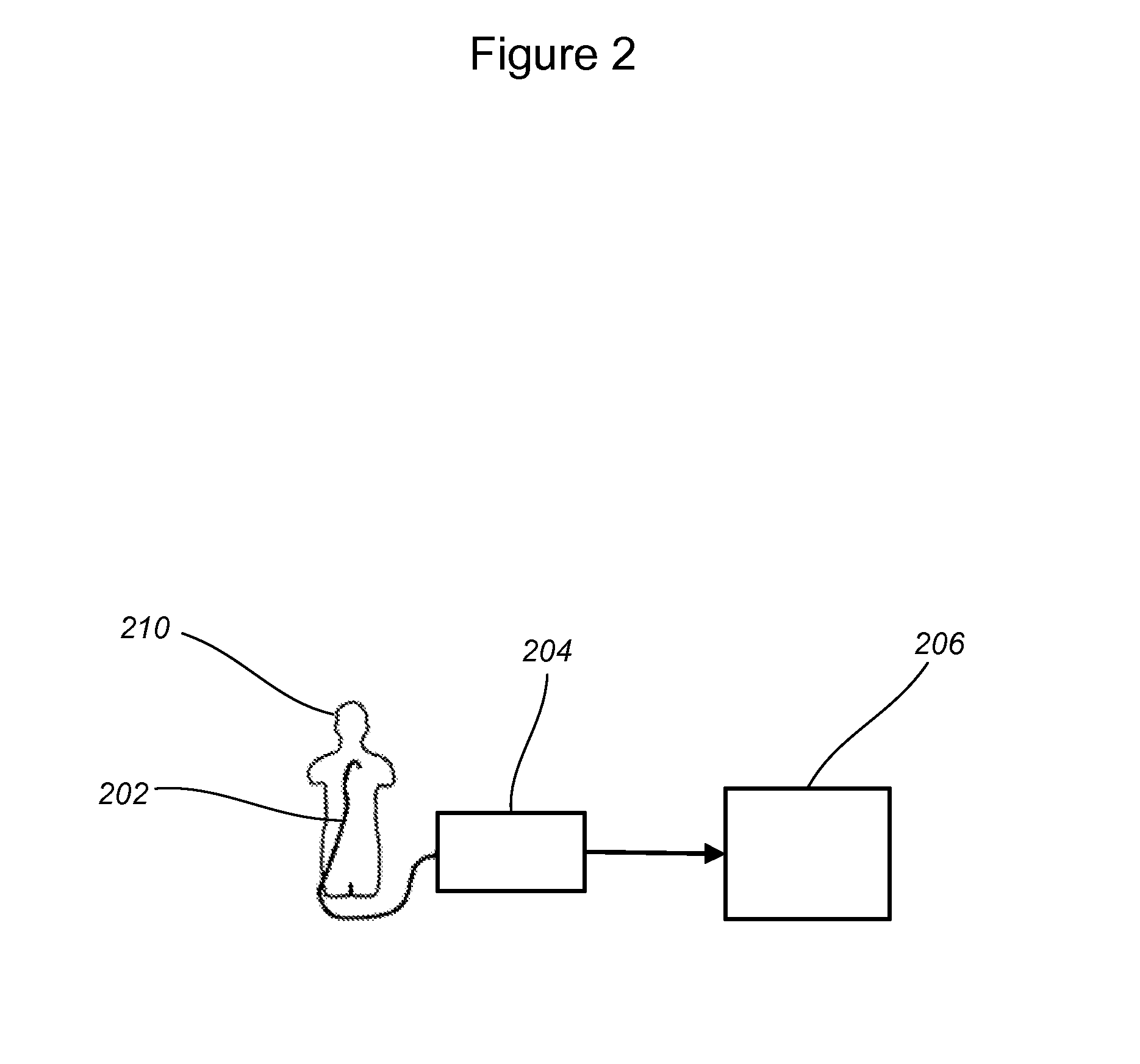Transcatheter aortic valve implantation pressure wires and uses thereof
a technology of transcatheter and aortic valve, which is applied in the field of transcatheter, can solve the problems of dramatic alteration of ari and difficult quantification of pv ar, and achieve the effect of good prognosis
- Summary
- Abstract
- Description
- Claims
- Application Information
AI Technical Summary
Benefits of technology
Problems solved by technology
Method used
Image
Examples
example 1
Patient Population, Assessment and Procedure
[0084]All patients had severe symptomatic aortic stenosis (AS) and were treated in a single center with balloon-expandable TAVR (Edwards Sapien / Sapien XT, Edwards Lifesciences LLC.), performed under predominant fluoroscopic guidance, as has been previously described11. All patients studied had simultaneous transcatheter transaortic hemodynamic pressures measured post TAVR, with a multipurpose catheter placed across the transcatheter valve into the left ventricular cavity and a pigtail catheter placed in the aortic root above the transcatheter valve. If an additional maneuver was performed, such as valve-in-valve or post-dilatation, hemodynamic pressures were recorded after that additional intervention.
[0085]Patients also had peri-procedural TEE imaging for procedural guidance and post TAVR evaluation of valvular function. TEE was performed using the iE33 xmatrix echocardiography system (Philips Ultrasound, Philips Medic...
example 2
[0093]A total of 303 patients were studied. Median age was 86 (interquartile range, IQR, 80-90) and mean aortic valve gradient was 43 mmHg (IQR 41-52). By TEE VARC-2 criteria, 145 had no / trivial PV AR (47.9%), 91 had mild PV AR (30.0%), 62 had moderate (20.5%) and 5 severe PV AR (1.7%). Overall, PV AR by TEE stratified survival poorly (FIG. 7). Although there was an excellent prognosis if there was no or trivial PV AR by TEE, there was considerable overlap in outcomes amongst patients in the intermediate range of echocardiographic severity with mild and moderate / severe PV AR having similarly poor outcomes (FIG. 7).
example 3
Paravalvular Regurgitation, the Aortic Regurgitation Index (ARi) and Heart Rate
[0094]A total of 60 patients (19.8%) had a HR80. HR was unrelated to PV AR grade by TEE (r=0.04, p=0.48). ARi was weakly correlated to both TEE PV AR grade (r=−0.20, p=0.001) and heart rate (r=0.30, p80 (FIG. 8A-B).
PUM
 Login to View More
Login to View More Abstract
Description
Claims
Application Information
 Login to View More
Login to View More - R&D
- Intellectual Property
- Life Sciences
- Materials
- Tech Scout
- Unparalleled Data Quality
- Higher Quality Content
- 60% Fewer Hallucinations
Browse by: Latest US Patents, China's latest patents, Technical Efficacy Thesaurus, Application Domain, Technology Topic, Popular Technical Reports.
© 2025 PatSnap. All rights reserved.Legal|Privacy policy|Modern Slavery Act Transparency Statement|Sitemap|About US| Contact US: help@patsnap.com



